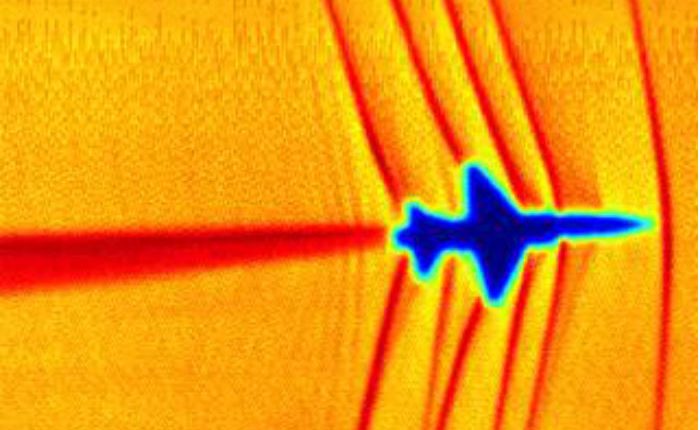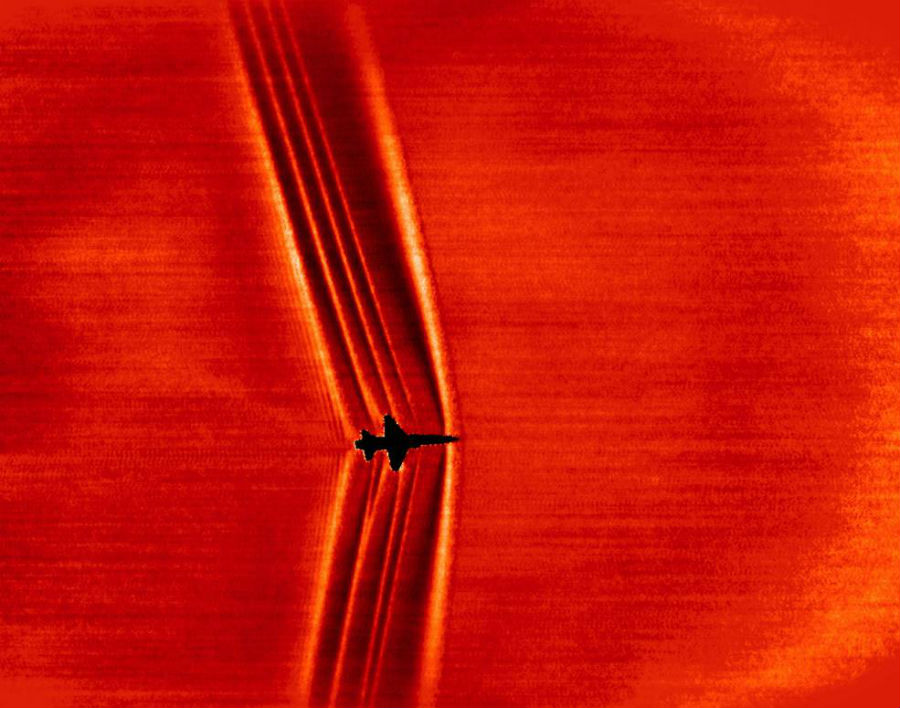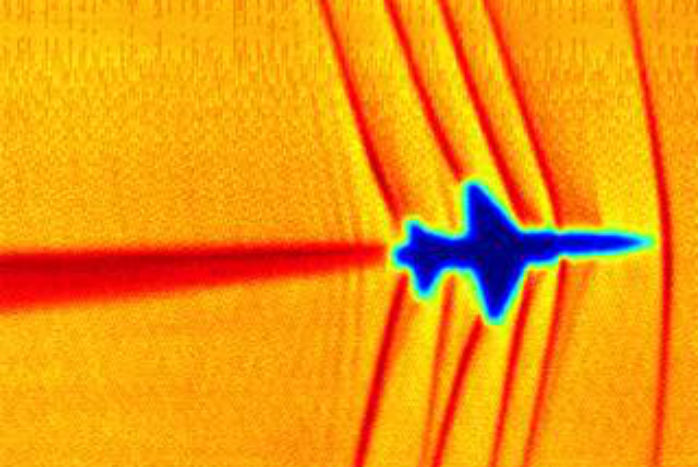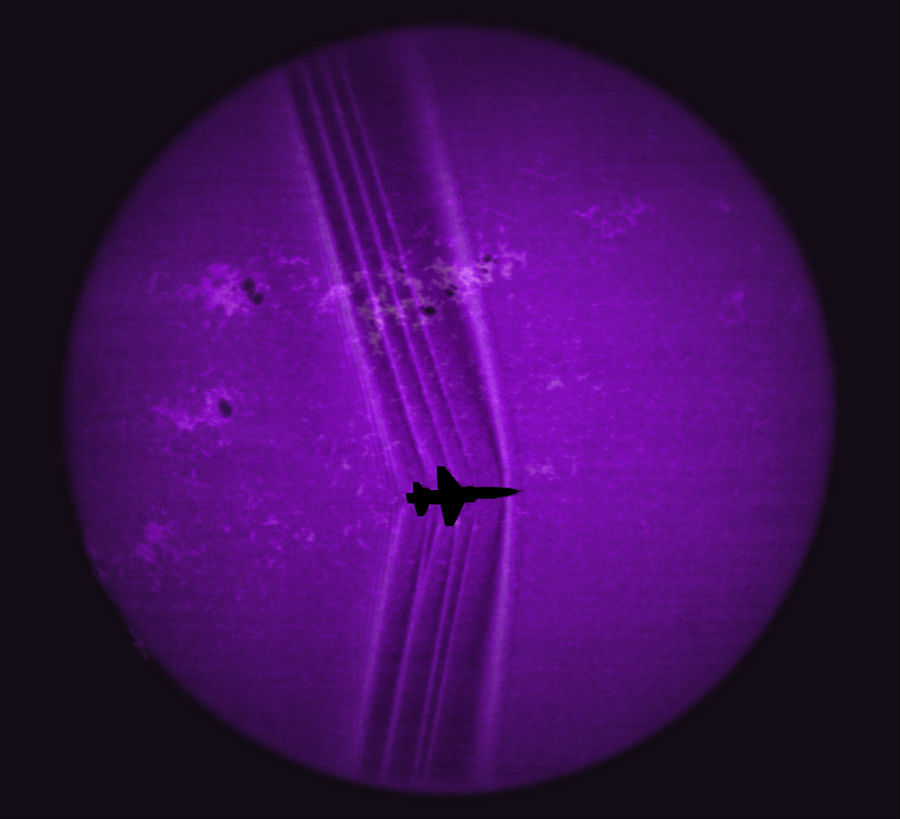Who new some ordinary NASA- research photos could be so beautiful.
Schlieren photography is the art of using images to capture the flow of fluids at different densities and is used by NASA researchers to visualize the flow away from the surface of an object.
The earliest schlieren photographs of shockwaves, the thin regions of high gradients in pressure, temperature, and density, were produced in black and white. More recently, NASA has used other methods to colorize these photos such as employing a prism to break white light into different colors.
Now NASA’s Armstrong Flight Research Center is using the solar system, specifically the sun and moon, to create radiant photographs of supersonic shockwaves using ground-based cameras.
Typically it is challenging to capture schlieren images of a full-scale aircraft in flight due to the need for precise alignment of the plane with the camera and the sun.
To make it work, NASA researchers would use the sun’s edge as a light source, but only two observations of each shockwave could be made (when the aircraft passed the left and right sides of the sun).
Now, NASA engineers are working on new techniques to overcome this. One recent demonstration, called Calcium-K Eclipse Background Oriented Schlieren (CaKEBOS), showed how well the sun could be used for background oriented schlieren photography, and used fairly inexpensive equipment to do so.
“Using a celestial object like the sun for a background has a lot of advantages when photographing a flying aircraft,” said Michael Hill, Armstrong principal investigator. “With the imaging system on the ground, the target aircraft can be at any altitude as long as it is far enough away to be in focus.”
The results can be seen in the accompanying photos showing not just the supersonic shock waves, but also density changes like wing vortices and engine plume effects, according to NASA.




